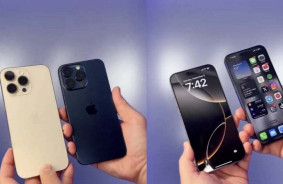Information has appeared online about the battery capacity of the future Apple iPhone 16 lineup. According to leaks, most new models will have larger capacity batteries compared to their predecessors. The exception is the iPhone 16 Plus, which will have a smaller battery than its predecessor.
It is unclear why this happened, since besides the difference in size, it is expected that the iPhone 16 and iPhone 16 Plus will have an identical set of functions. It can be assumed that the decrease in capacity will go unnoticed due to increased efficiency in other areas. On the other hand, by reducing the battery capacity, Apple may be trying to increase differentiation between the iPhone 16 Plus and iPhone 16 Pro Max to push customers towards purchasing more expensive versions.
According to other rumors, the current iPhone 16 Pro Max may boast an increased battery life of over 30 hours (compared to 29 hours for the iPhone 15 Pro Max). Additionally, it is expected that both the iPhone 16 Pro and the iPhone 16 Pro Max will have slightly larger displays.
Some information has also emerged regarding the next generation Apple Watch. It is noted that Apple plans to use a new low-power OLED panel technology to reduce energy usage by the always-on display feature. The technology is called LPTO TFT (low-temperature polycrystalline oxide thin-film transistor) - a method of applying oxide to conducting TFT transistors and switching transistors for each pixel. Switching transistors control the voltage applied to liquid crystal cells, allowing precise control over the amount of light passing through each pixel.
Existing OLED displays in the Apple Watch only use LPTO TFT in a few switching transistors and rely on LTPS technology (low-temperature polycrystalline silicon) for most transistors, as well as the conducting TFT. Switching to LTPO OLED will result in lower leakage current and more stable operation at low refresh rates, leading to overall energy savings. However, a drawback is that this technology complicates the manufacturing of TFT substrates.
This information has also led to the assumption that in the future Apple intends to transfer the LPTO OLED technology to other products, such as the iPhone.













Comments (0)
There are no comments for now